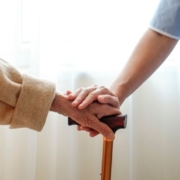Demand For Senior Housing Ticks Up As Sector Continues COVID Recovery
Demand for senior housing properties began recovering this quarter as vacancies dropped nationally and rent growth picked up across all four major care types.
According to a new report from Moody’s, Q2 vacancy for the asset class came in at 16.9%, still worse than the pre-COVID five-year average but 10 basis points below the peak of 17% earlier this year.
“It may be too early to say the stress has bottomed out, especially given the recent resurgence of the virus, but second quarter data did prompt a bit of optimism for the senior housing sector,” Moody’s economist Lu Chen writes, noting that the second quarter vacancy rate for independent living, memory care, and assisted living facilities all declined between 10 and 30 basis points, while the vacancy rate for skilled nursing properties remained flat.
Memory care facilities, which have been hardest hit by the pandemic, showed a vacancy decrease of 8.8%, ending the quarter at 19.9%. Assisted living and skilled nursing facilities vacancies ticked up 6.9% over the same period to 18.2% and 16.5% respectively, while the vacancy rate at independent living facilities ticked up 6.1% from 9.5% pre-pandemic to 15.9% in the second quarter of this year.
Rent growth has softened year-over-year, Chen says, since most senior housing properties post rent changes at the beginning of the year, but Moody’s data suggests that rent growth picked up across all care types. The assisted living sector posted the fastest year-over-year rent growth, followed by independent living facilities.
Meanwhile, net absorption increased into positive terrain for the first time since 2020. Memory care is back to Q1 2020 levels, while skilled nursing showed the biggest gains with 8,000 units absorbed so far this year.
“As a result of the weakness in sector fundamentals since the public health crisis, extended slowdown of new facilities coming to market is consistent with the increase in investor’s caution for senior housing,” Chen writes.
Moody’s is “cautiously optimistic” in its outlook for the sector, Chen says, citing Centers for Medicare and Medicaid Service data indicating that more than 83% of the nursing home residents are fully vaccinated. However, he notes just 26% of nursing home facilities across the US have hit the industry target of vaccinating 75% of their staff.
“Low vaccine rates among staff and residents in states such as Florida leaves the senior housing industry more vulnerable to the resurgence of the virus. Starting in the first week of July, there has been a noticeable uptick of confirmed cases among senior housing residents and staff,” Chen says. “With new mask and vaccination mandates starting to take place in many places, we will closely monitor how that’s shaping the industry demand and supply in the coming months.”
An analysis from JLL earlier this spring indicated the need to serve the middle-income population will increase, leading to opportunities for investors.
“Investors remain bullish on seniors housing and care investments,” said JLL Managing Director Zach Bowyer, MAI, head of Alternatives Asset Sectors, Valuation Advisory. “We anticipate market fundamentals to steadily improve and the market to re-stabilize between two and four years, depending on the location.”
Source: GlobeSt.










